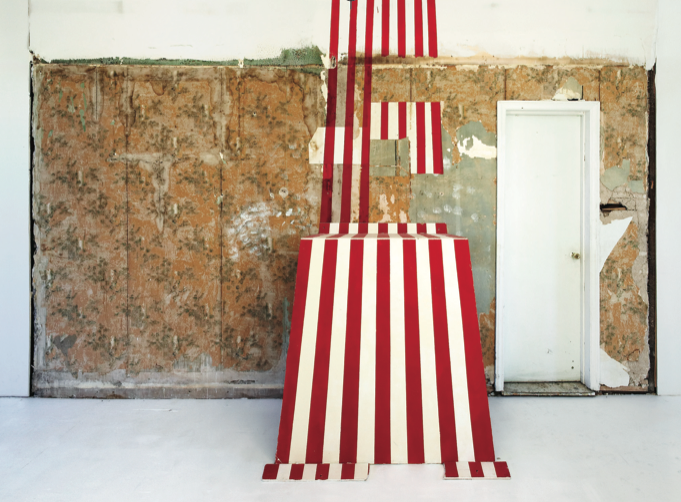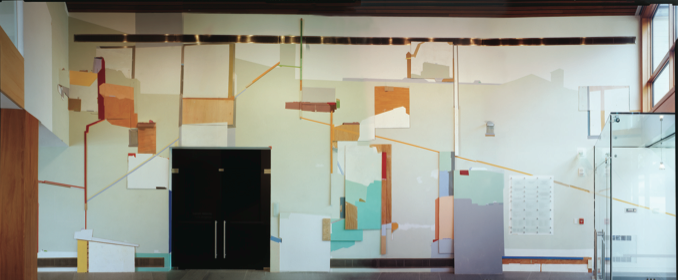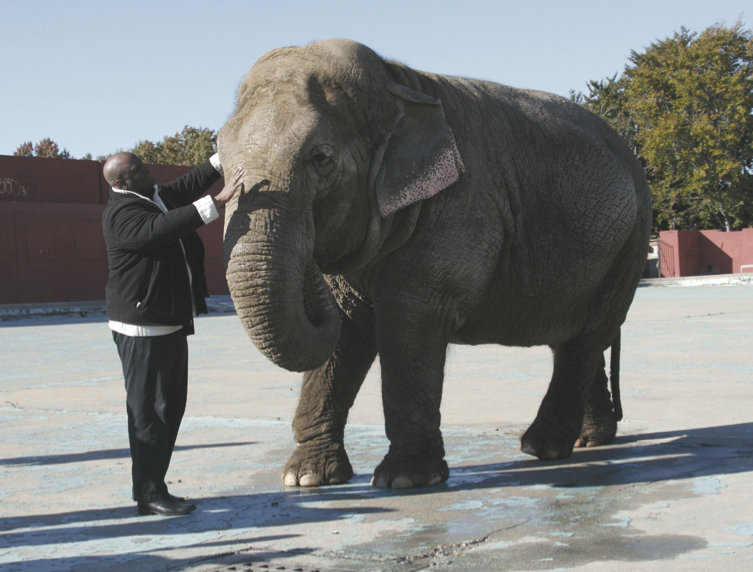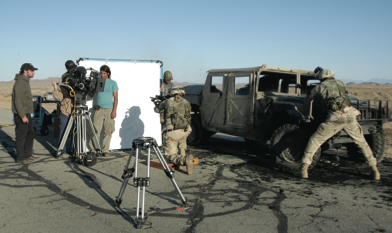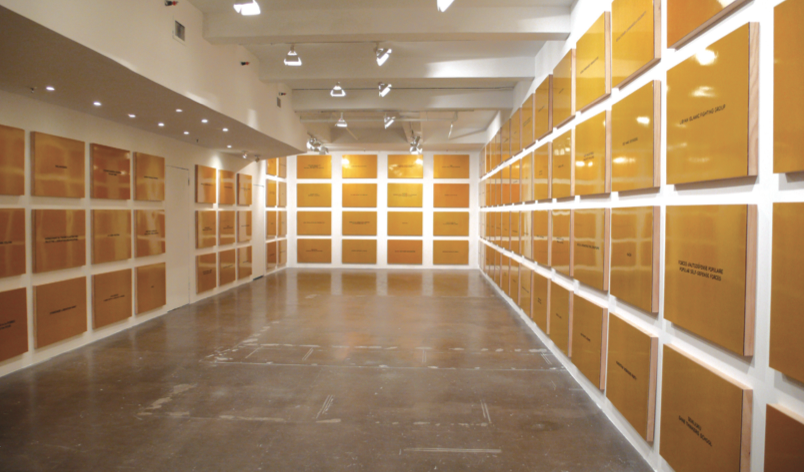The Whitney Biennial 2008
The curators of the Whitney Biennial—the show that everyone loves to hate and hates to love—have a thankless task. Attempting to gauge the tenor of the times in a single exhibition, even if it putatively surveys the art of only a single country, is a quixotic mission. The impresarios of this year’s model, curators Henriette Huldisch and Shamim M. Momin happily eschew any pretension to comprehensiveness or an overarching thematic cohesion; instead, they frankly admit to, in Whitney Director Adam D. Weinberg’s words in the catalogue, not making “any claim to neutrality or objectivity” but rather “reacting to what they have had the occasion to see and experience.”
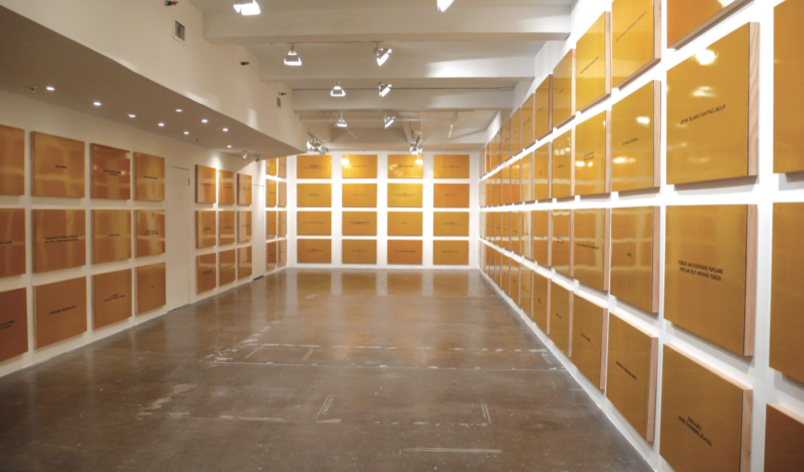
Like most biennials these days, the Whitney’s comprises a myriad of mediums, including a film and video component that would take days, if not weeks, to view in its entirety. Huldisch and Momin have, however, put together a smaller show than usual— 81 artists as compared to 106 two years ago—and located a number of artists’ projects in a short-lived annex at the Park Avenue Armory. Within the museum, many artists occupy their own rooms or discrete spaces, making the 2008 Biennial feel less cluttered and breathless than previous versions. Yet while the curators have assembled what may be the most measured and considered Biennial in memory, it also seems one of the driest. This exhibition is a sober affair, with sensual pleasure, as well as painting per se, in short supply (the two things certainly related, if not actually coterminous). And in this respect, the curators have indeed succeeded in capturing the spirit of the present moment, in which a rather puritanical seriousness appears to be art’s readiest response to a troubled world.
Demographically, this Biennial gets a number of things right. Some 40% or so of the artists this year are women. And although the Whitney does not release such statistics, according to the author’s tabulations about nine artists are Latin American or Latino—a representation of about 13%, which is similar to that of the U.S. population. Several of these artists acquit themselves with great aplomb. Best of all, Venezuelan-born Javier Téllez provides one of the Biennial’s highlights with his black-and- white video Letter on the Blind, For the Use of Those Who See (2007). In it, five blind men and one woman sit on chairs in the drained swimming pool at Brooklyn’s McCarren Park. A handler leads in an elephant and, one by one, the seated people get up and approach the animal. Extending their hands, we watch and hear them encountering a real pachyderm for the first time. Their words and body language range from trepidation to wonder to a kind of rapture, and the initial experience is followed, in standard documentary style, by the subjects giving voice to their feelings after the fact. Téllez, of course, based his meeting of man and beast on the traditional Indian tale of six blind men who interpret an elephant with six disparate similes, depending on which part of the animal they touched, but any allegorical impulse gets held in check in the video by the sheer, literal fact of first contact between sightless person and massive mammal. The viewer shares with the participants the raw joy of embodied subjectivity.
An Ideal Disjuncture (2008), by Los Angeles-based Ruben Ochoa, features rebar, cement-covered wooden pallets, and chain-link fencing in a shambolic construction that evokes the concrete jungle. Materially, the sculpture fits into the ramshackle aesthetic explored by the New Museum of Contemporary Art’s recent Unmonumental show, while formally it recalls a sidewalk heaved up by a tree’s expanding roots. Ochoa’s work represents the dystopian pole of an interest in vernacular construction, which constitutes a through line linking many works in the exhibition and suggests a development, or at least a change in emphasis, away from the somewhat nostalgic concern with modernist architecture that marked much art of the last few years. New York artist Heather Rowe’s Something crossed the mind (embellished three times) (2008), a double-aisled structure of two-by-fours evokes a half-built frame house, made into a device for producing fractured, Cubist views by the addition of jagged shards of mirror in the spaces between studs. The House that Frank Lloyd Wright built for Fred Hampton and Mark Clark (2007) by William Cordova, originally from Peru, gives a political-historical spin to a similar wooden framing by building it on the plan of a house where two members of the Black Panthers were killed by Chicago police in 1969. Unfortunately, beyond the title, there’s not much to connect the structure with its ostensible content and the work remains quite inert. More affectingly, New Yorker Lisa Sigal meticulously replicates a wall from her own studio in The Day before Yesterday and the Day after Tomorrow (2008), merging lovingly reproduced stained wallpaper with some red and white stripes that suddenly cantilever out from the wall like an awning.
Through cut-outs in an adjacent wall of unfinished sheetrock we catch glimpses of inaccessible rooms painted in red, blue, and green. Sigal deftly orchestrates color and enigmatic space in a manner reminiscent of James Turrell, at the same time conflating representation and abstraction, the real and the pictorial, architecture and painting, to create a quirky amalgam of genres and epistemological categories.
Not unexpectedly, current events also emerge as a major theme in several works. In Divine Violence (2007), Los Angeleno Daniel Joseph Martínez fills a room with panels coated in metallic gold auto paint, each emblazoned by a sign-painter with the name of a group denoted as “terrorist.” These range from the topical—Al Qaeda, CIA, MI6—to the passé—Sendero Luminoso, Black September Organization, La Cosa Nostra—to some so obscure they seem faintly ridiculous—World Punishment Organization, Revenge of the Hebrew Babies, Uncontrolled Rage. Crossing the gold-leaf ground of religious icons with California Finish Fetish surfaces, the collection of painted appellations suggests that the sacred nomenclature of ideology might be just another serial seduction. The war in Iraq surfaces in one of the Biennial’s subtlest and most complex works (which was, gratifyingly, given the munificent Bucksbaum Award). The Casting (2007), a video installation by Omer Fast, an Israeli-born artist working in Berlin, intertwines a pair of narratives recounted by an American soldier, one about an abortive date with a disturbed German girl, the other about inadvertently killing an Iraqi civilian. The two stories intermingle seamlessly and on two screens we see actors holding poses in tableaux that correspond to the spoken words. The strange doubling and melding of storylines—one unserious, one grave, both given equal weight by the speaker—provoke unease in the viewer, which is not actually lessened by walking around to the other side of the projected images to see another pair, the actual footage of the interviewer and interviewee, the artist and the soldier; Fast’s reveals his fabrication of the uncanny narrative to be the result of remarkably expert editing, as we see snippets of more than one conversation, evidenced by the fact that the soldier’s clothes change from one sentence—sometimes one word—to another. This brilliant sleight of hand casts doubt on the reliability of any narrative—or even memory—and both the tale and the teller stand in for all the stories that have come from the war, not to mention those used to start it.
The Casting represents the very best of what the this kind of survey show can offer—art that is simultaneously immediate and accessible yet sophisticated and layered, fresh in its particular mode of address, timely yet undoubtedly able to reverberate beyond its moment, and indifferent to, or transcending, trendiness and an overheated market. With notable exceptions, however, much of the rest of the exhibition does not approach that high level of achievement. The rather dour and somewhat dull work that fills out the 2008 Biennial may be a sign of the times, but it does nothing to invigorate what is by now a routine franchise.

